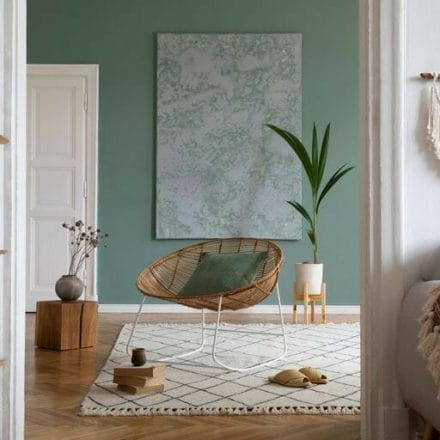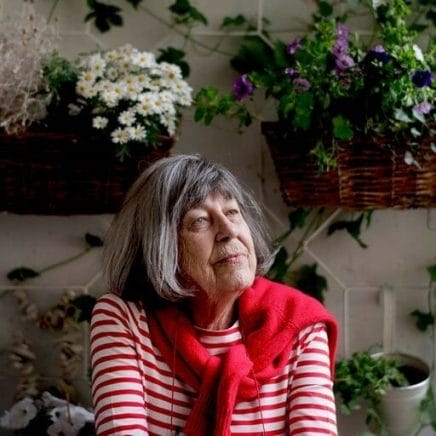We want to live in clean spaces. After all, improving the cleanliness of our homes has major physical, mental, emotional, and social benefits.
Trends in organization and home decor ebb and flow, but a certain fascination with decluttering and cleaning stays consistent. The reality is that we all struggle to bridge the gap between our goals and reality—which is why cleaning and organization trends are so pervasive in pop culture.
Celebrities have a heavy influence on our design and cleaning trends. All of the most popular decor trends— Scandi, Japandi, and the Minimalist Movement—are popular because celebrities made them that way.
Even cleaning trends like:
- The Konmari Method
- Swedish Death Cleaning
- Anything on the Home Edit
- Spring Cleaning
Are considered trends because influencers rave about how effective they are.
At the root of those trends is a deep-seated human obsession with understanding how we can reach our cleaning goals despite all the factors that prevent us from getting there.
Shifts During the Pandemic

At the beginning of the Covid-19 pandemic, most of the United States was under strict shelter-in-place orders. Suddenly, we were asked to conduct work, education, and family life within four walls.
Even now, while many of us have ventured out of our homes for work, school, travel, and entertainment, once again, our lives have shifted.
Lifestyle Shift

Members of the workforce may still be working remotely or adopting a hybrid schedule. Many families have decided to continue homeschooling their children.
Spending more time than ever in our homes has given many of us an increased awareness of the spaces where we live. Being home all the time may have created more challenges in keeping things tidy, but it also increased our awareness and appreciation of our homes. You probably have a clearer view into what you’d like to improve about your living space.
If increased time at home has sparked your curiosity about ways to keep it more peaceful, clean, and uncluttered, keep reading to learn more about modern design and organizational movements.
Modern Decor
Current decor trends point to a desire for clean, uncluttered spaces. Simple lines, natural colors, and a minimalistic appearance characterize the popular Scandi and Japandi-style interiors.
If you’ve been to an Ikea, you’ve been exposed to Scandi design. Short for “Scandinavian,” this trend originated in the countries of Northern Europe and focuses on combining functionality with beauty. Scandi values:
- Minimalism
- Simple lines
- Natural light
- Natural colors

Scandi evokes warmth and peace without being kitschy or cluttered.
Japandi design combines simple Scandi ideals with Japanese beauty. Japandi emphasizes our relationship with the natural world and sustainability while maintaining the aesthetics that made Scandi so popular. Japandi pieces tend to be sleeker than Scandi’s rustic touches and use deeper color tones.
Both styles are grounded in minimalism and characterized by a lack of clutter, evoking peace, calm, and contentment—something we all crave, especially after spending more time than ever at home.
The Minimalism Movement

In recent years, minimalism has become the subject of:
- Podcasts
- Books
- Documentaries
- Social media campaigns
Devotees evangelize the peace they feel about letting go of extra possessions and living a simpler life. Aspiring minimalists can look to dozens of sources for guidance on how to cut down on their stuff and simplify. While minimalism is a popular buzzword right now, its roots go back centuries.
In the 1800s, transcendentalist philosophers like Ralph Waldo Emerson and Henry David
Thoreau wrote about the virtues of simplicity and living with less.
Throughout the 20th century, design movements focusing on simple materials and sleek lines have gone in and out of popularity. Real Simple, a magazine that is a staple in many homes, was started in 2000, and emphasizes “keeping life simple and stress free.”
Truth of the matter:
The longstanding popularity of minimalist movements goes to show that we want to be in peaceful, clean homes—we just don’t always know how to get there.
Cleaning Trends

Because cleaning is a fact of life that occupies our minds daily, it’s natural for trends to mirror this. Certain methods and philosophies are having their heyday right now. Shows, books, and social media factor in the rising popularity of these organizational trends.
The Konmari Method
Marie Kondo revolutionized decluttering with her “spark joy” method of getting rid of any items
that don’t make you feel happy. She recommends thanking items that have served their purpose before throwing them away or donating them.
Kondo acknowledged in a recent article that with three children, she still struggles to keep her home organized. While her home is no longer pristine and tidy, she still embraces minimalism not only in physical spaces but in how she spends her time.
Swedish Death Cleaning

Margareta Magnusson published her book, The Gentle Art of Swedish Death Cleaning, in early 2018. Despite the initially shocking title, Swedish death cleaning, or döstädning, is a simple and considerate practice.
Swedish death cleaning is based on the idea that as you age, you should begin clearing your home of excess possessions. This helps you simplify your life and focus on what matters as you age. It also helps your loved ones by giving them fewer things to manage after your passing.
The Home Edit
The Home Edit is a company founded by Clea Shearer and Joanna Teplin. They have created:
- Two New York Times best-selling books
- A podcast
- A Netflix show
- A product line
The Home Edit’s main philosophy is combining form, function, and fun for a home that stays neat and organized while keeping personality as a strong feature. They are very influential in the home organization space. Their marketing and personality-infused cleaning tips give them a broad appeal. They appeal to people who want a neater, more organized space but don’t resonate with the severity of more minimalistic approaches.
The Classic: Spring Cleaning

Organizing trends come and go, but spring cleaning has been a popular seasonal ritual for centuries. Humans have always needed to be intentional about taking time to clean and organize.
Spring Cleaning Roots
The practice has roots in many religious and cultural traditions like:
- Judaism
- Buddhism
- Khaneh Tekani
- Hinduism
Judaism
In Judaism, homes are traditionally cleaned before Passover to remove any yeast products.
Buddhism
A Buddhist festival in Thailand held in April involves purification rituals, including cleaning homes and temples.
Khaneh Tekani
Khaneh Tekani, or “shaking the house,” is a Persian tradition dating back over 3,000 years. In the spring, families cleaned and decluttered their homes to prevent bad luck in the coming year.
Hinduism
Yogis practice saucha, a purity practice, in the spring. Part of this practice is creating clean, non-distracting environments for home and work.

There may also be biological reasons for our drive to clean in the spring. As we experience more sunlight, our bodies produce less melatonin, driving us to be more alert. After a long, sleepy winter, the warm weather provides an opportunity to set things in order.
If the thought of gearing up for spring cleaning has your heart pounding, you’re not alone. The extra sunlight and societal pressures create intense feelings around spring cleaning.
Society tells us we should be ashamed when we struggle to keep our homes clean, but in reality, most of us fall somewhere on the hoarding scale. There’s a reason the human race has been doing spring cleaning for thousands of years!

We’re all a work in progress. There’s no need to feel shame no matter how out of hand your home feels to you.
It’s time to end the stigma around hoarding. There’s nothing wrong with asking for help. Whether you simply need some ideas to help you get started or are looking for some hands-on assistance, we’ve got you covered.


